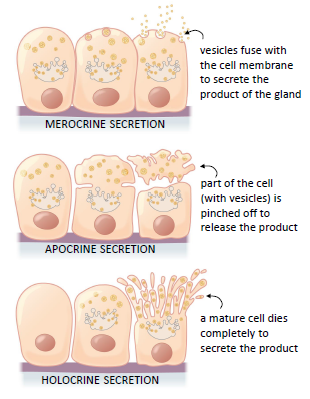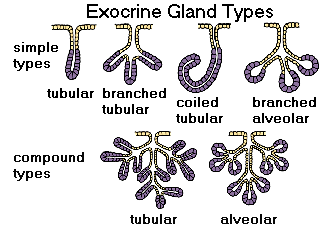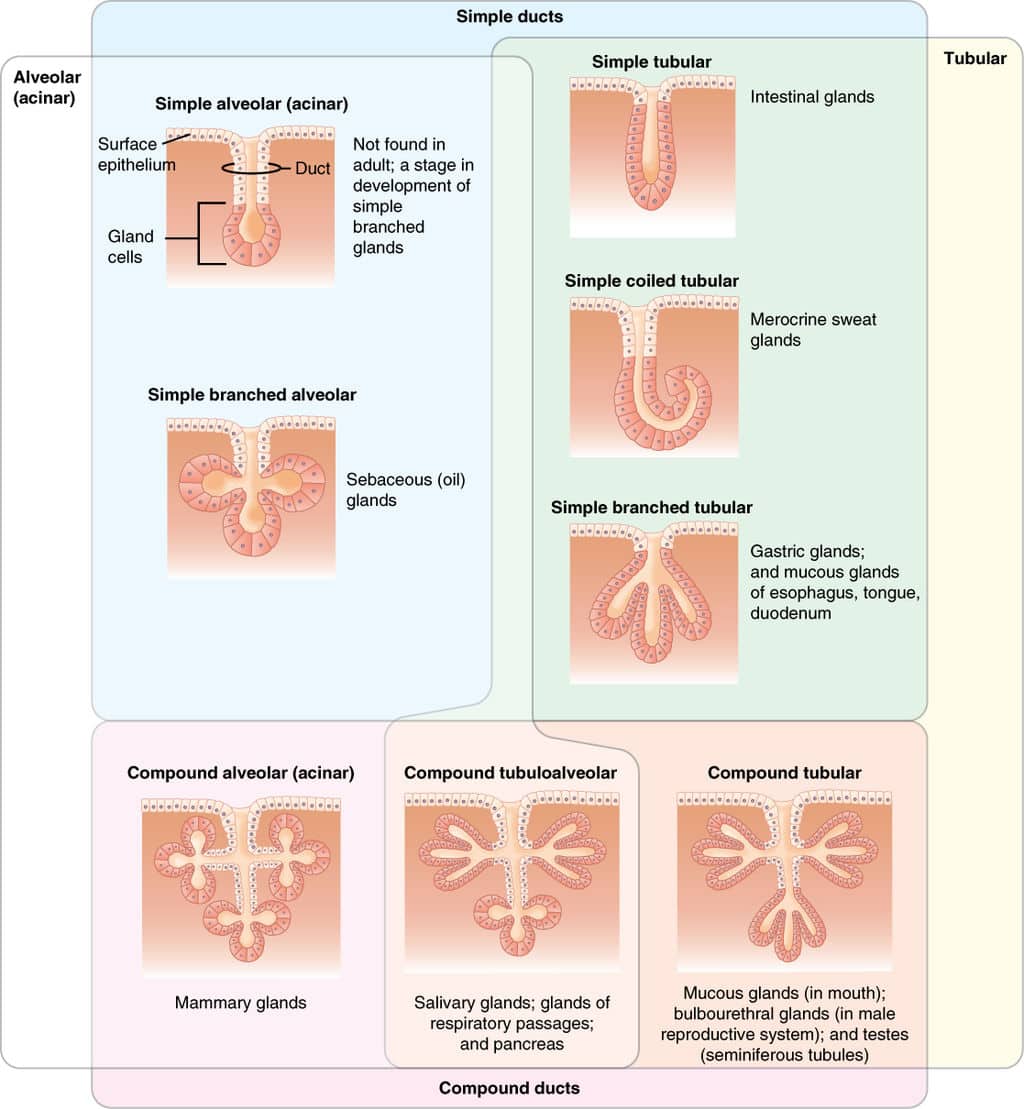Explain the Different Types of Exocrine Glands
The skin contains two types of exocrine glands. These are ductless glands no tube to carry to various parts.

How Are Exocrine Glands Classified Socratic
The salivary glands sweat glands and mammary glands come under exocrine glands which.

. You may get some idea of differences the two glands from the above mentioned definitions and. Merocrine or Eccrine Glands 3. A gland that makes substances such as sweat tears saliva milk and digestive juices and releases them through a duct or opening to a body surface.
Examples of Exocrine glands. However some glands may have both endocrine and exocrine activities such as the pancreas Taylor et al 1998. Examples of exocrine glands include sweat salivary mammary ceruminous lacrimal sebaceous prostate and mucous.
Exocrine gland secretions include saliva perspiration oil earwax milk mucus and digestive enzymes. Three types of exocrine glands can be identified based on the mode of secretion. The first type of glands known as the ones that produce the substances and then secrete them out with the help of a duct onto the epithelial surfaceSecond types of glands referred to the ones that produce the materials and then secrete them out to.
The endocrine glands are the type of glands that are ductless and releases hormones in the bloodstream. Anatomically these glands are broadly classified into two types based on the presence or absence of ducts. Sebaceous glands and sweat glands.
As the name suggests unicellular exocrine glands are characterized by a single secretory cell type. Throughout the embryo development endocrine glands lack ducts and remain as blocks of tissue. Please note that merocrine apocrine and holocrine are all distinguished types of exocrine glands.
Exocrine glands have two structural classifications. Exocrine glands secrete their products in duct system as happens in case of enzymes milk sebum or sweat. One of the best examples of unicellular exocrine glands are goblet cells.
The human body has many glands which produce many secretions such as sweat saliva oil and hormones. Examples of exocrine glands include sweat glands lacrimal glands salivary glands mammary glands and digestive glands in the stomach pancreas and intestines. Difference Between Endocrine and Exocrine Glands.
This is different from the mode of secretion seen in ductless endocrine glands which release their products mainly hormones directly in blood stream. Small large intestine crypts of Lieberkuhn Simple Branched Tubular. Merocrine glands apocrine glands and holocrine glands.
The liver and pancreasare. Problem 5 REFERENCE PROBLEM 5 A rectangular field is bounded on one side by a river and on the other three sides by a fence. The sweat sudoriferous glands are found all over the body except for the lips nipples and certain parts of the external.
Exocrine glands are one of two types of glands in the human body the other being endocrine glands which secrete their products directly into the bloodstream. Exocrine glands are glands that secrete substances on to an epithelial surface by way of a duct. Mammary glands are located in the breast of females and have the function of production of milk.
The exocrine glands are the type of glands that carries hormones in the ducts and releases it outside the body or on the external environment. Difference Between Endocrine and Exocrine Glands. Typical exocrine glands are salivary glands sweat glands mammary glands digestive system glands.
The apocrine glands gather the cellular products on the top surface of each cell in the gland and later forms the glands lumen. Glands in the Skin. Find the dimensions of the field that will maximize the enclosed area if the fence has a total length of 320 ft.
Pancreas and liver are the twoorgans that crossover both exocrine and endocrine glands. 4 rows Digestive exocrine glands are released when the food type they work on is in the digestive. Terms in this set 8 Simple Tubular.
So it secrets chemical substances directly to the blood stream while exocrine gland secrets its product into a duct. Endocrine glands are the glands that secrete hormones without ducts while exocrine glands secrete hormones. The sebaceous oil glands are simple and branched alveolar glands cov-ering the body except on the palms and soles.
The merocrine glands secrete their own cellular products. Different types of exocrine glands and their locations in the body. Pyloric glands stomach oxyntic glands in parts of stomach.
Based on organization exocrine glands are divided into two main categories that include unicellular and multicellular exocrine glands. The glands are of two types based on the mode in which they are released or secreted. The exocrine glands are of three types.
Mammary glands salivary glands sweat glands lacrimal glands and digestive glands present in the stomach pancreas and intestines are common examples of exocrine glands. Their secretions are directly released into the blood which carries them to various parts of the body. In Problems use Lagrange multipliers to find the answers to the indicated problems in Section 54.
The main difference between Exocrine glands and endocrine glands becomes apparent on a simple look. The exocrine glands have ducts. Unicellular one cell layer and multicellular many cell layers.

Structure Of Glands Exocrine Endocrine Histology Teachmephysiology


No comments for "Explain the Different Types of Exocrine Glands"
Post a Comment